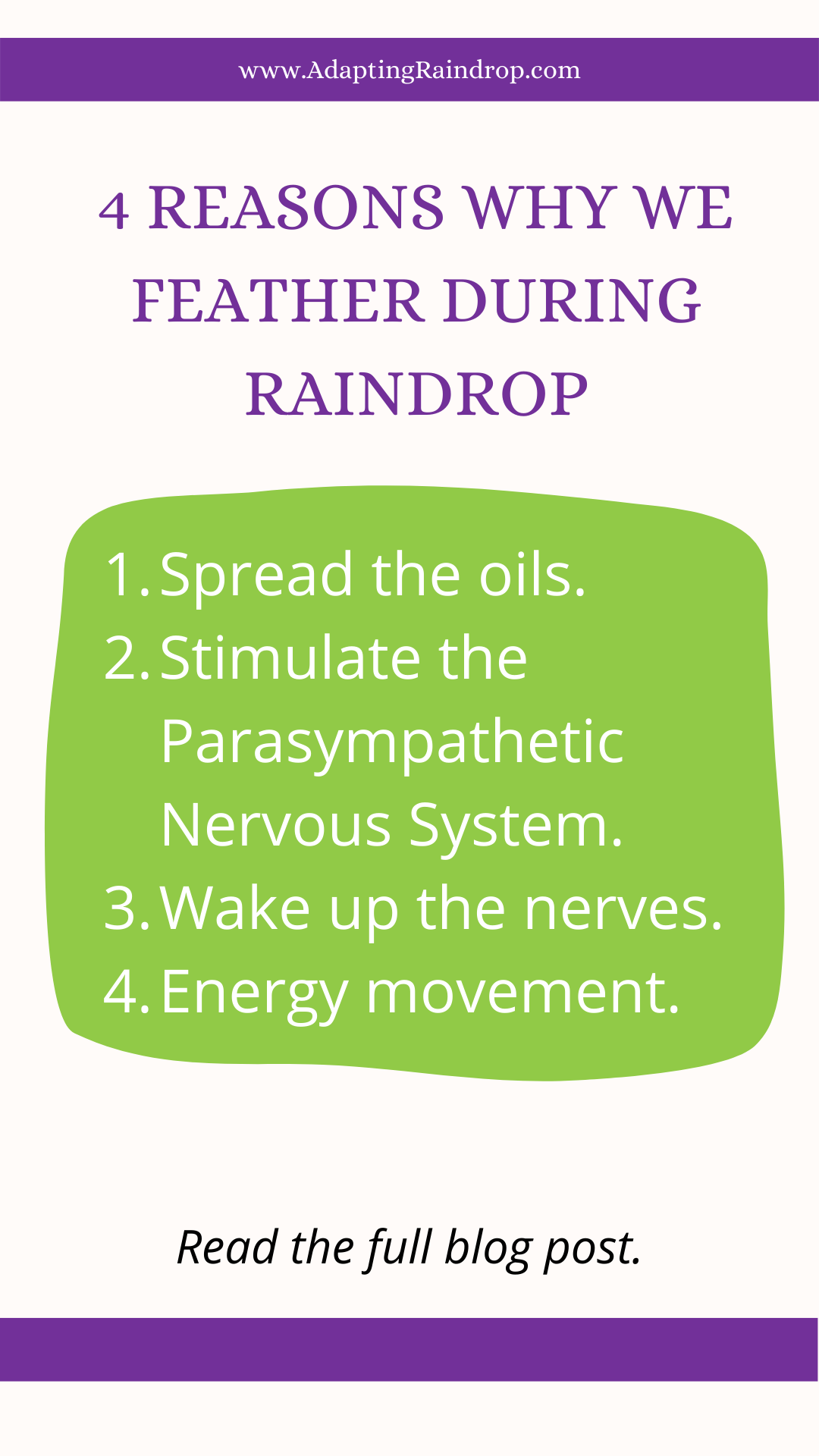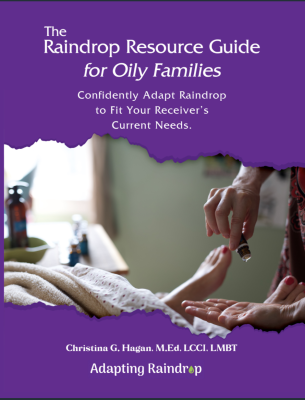Have you ever wondered why we feather during Raindrop? Feathering is used a lot in Raindrop, actually it is used after each oil is dropped on the spine.
Below are four reasons why I feel feather is included in Raindrop.
I’ll also share with you ways to check to see if your feathering technique is doing its job.
1. To spread the oils
This is a very basic and practical reason. Feathering simply helps to spread the essential oils along the spine. You’ll notice that when you drop the oils below the shoulder blades and follow up with feathering, the oils end up spreading all the way up the back, to the neck and base of the skull.
As you are going through each oil used in Raindrop, you’ll see the spreading of the oil as a shine on the back along the spine.

2. To Stimulate the Parasympathetic Nervous System
That light feathery touch helps to stimulate the vagus nerve, a key member of the parasympathetic nervous system (PNS) When the PNS is activated, it helps the body to calm down and relax. This is one reason Raindrop is so super relaxing.
You’ll notice that as your Receiver relaxes, not only does their breathing slow down, but their heart rate slows down too. Other things that are going on that you can’t see is that their blood pressure lowers and so do their stress hormones.
This is certainly all good things we want for our Raindrop Receivers, right? To relax and destress.
3. To Wake up the Nerves
This light touch also helps to wake up each individual nerve that exits the spine. When those nerves are firing they are creating electrical charges that are sent out along the nerves.
The electrically charged molecules of essential oils are carried along with this charge and are delivered to the muscles and organs the nerve innervates. In the Raindrop Resource Guide for Oily Families I refer to this as the “Essential Oils Nerve subway system”.
You know you are doing a great job waking up those nerves when you see goosebumps on your Receiver’s back! You will most likely see those goosebumps pop up the first few times you do feathering along the spine, after that you will not see them as often.
If you keep your touch light and feathery, you are still creating that electrical charge even if you don’t see goose bumps.
4. To Move Energy
A common story about how Raindrop was developed explains that Gary Young observed the Lakota Indians in a healing ceremony doing a type of feathering along the back and spine. This feathering created an energy similar to the aurora borealis which the Lakotas feel has a healing and strengthening energy.
When studying chakras, this is also the direction that energy travels through the body; from the first chakra or energy center at the sacrum towards the seventh chakra or energy center at the crown of the head.
As you are feathering, especially during the arched feather strokes, you may notice a subtle flow or energy. At this time in the Raindrop, you should be feeling pretty relaxed yourself. In a relaxed state you’ll be much more attuned to your Receiver and able to feel the shift in energy.
Your Thoughts
Do you feel like you have observed all 4 of these effects of feathering on your Receiver? Or how about, have you felt them when you received Raindrop?
Is there an area in Raindrop that you have a question or would like more support? Feel free to let me know in the comment or send me an email below.
Learn More
If you found this blog post to be helpful, then Technique Intentions would be a great resource for you. In this online program you’ll learn about the intentions or the “why” behind each technique used in Raindrop. I’ll also show you visual ques to look for to check if you are achieving those intentions. If you understand the “why”, you’ll be able to do it better!







